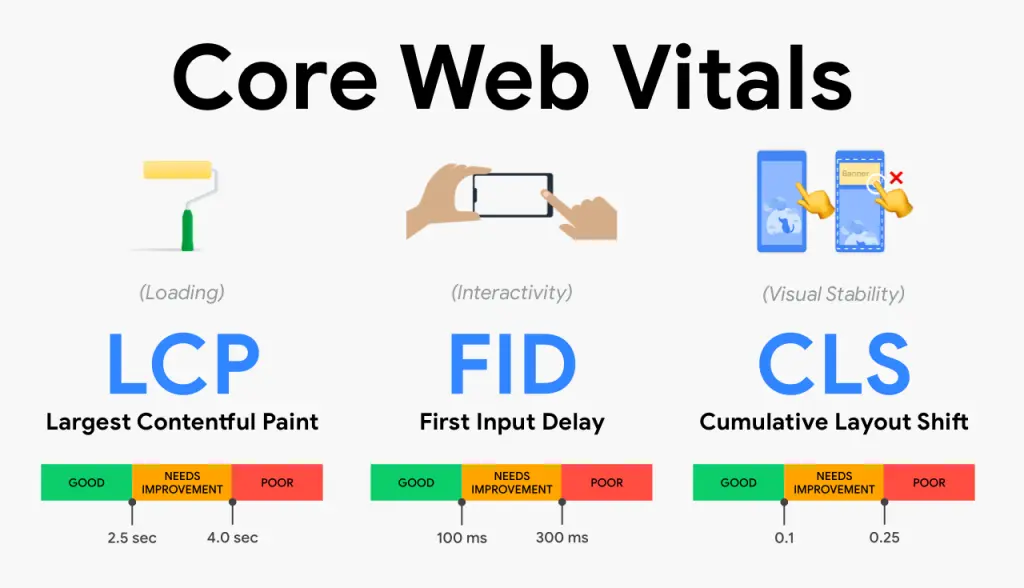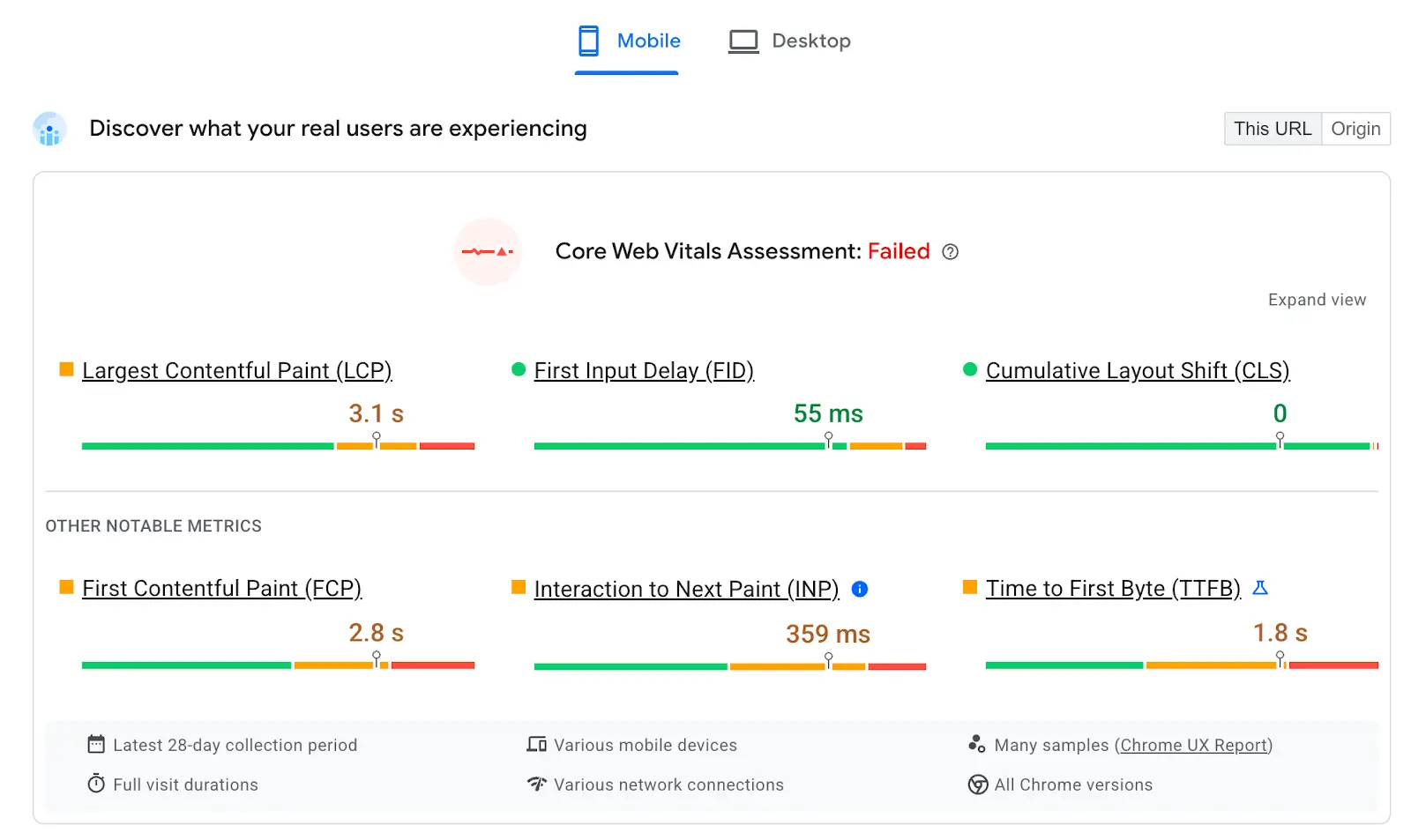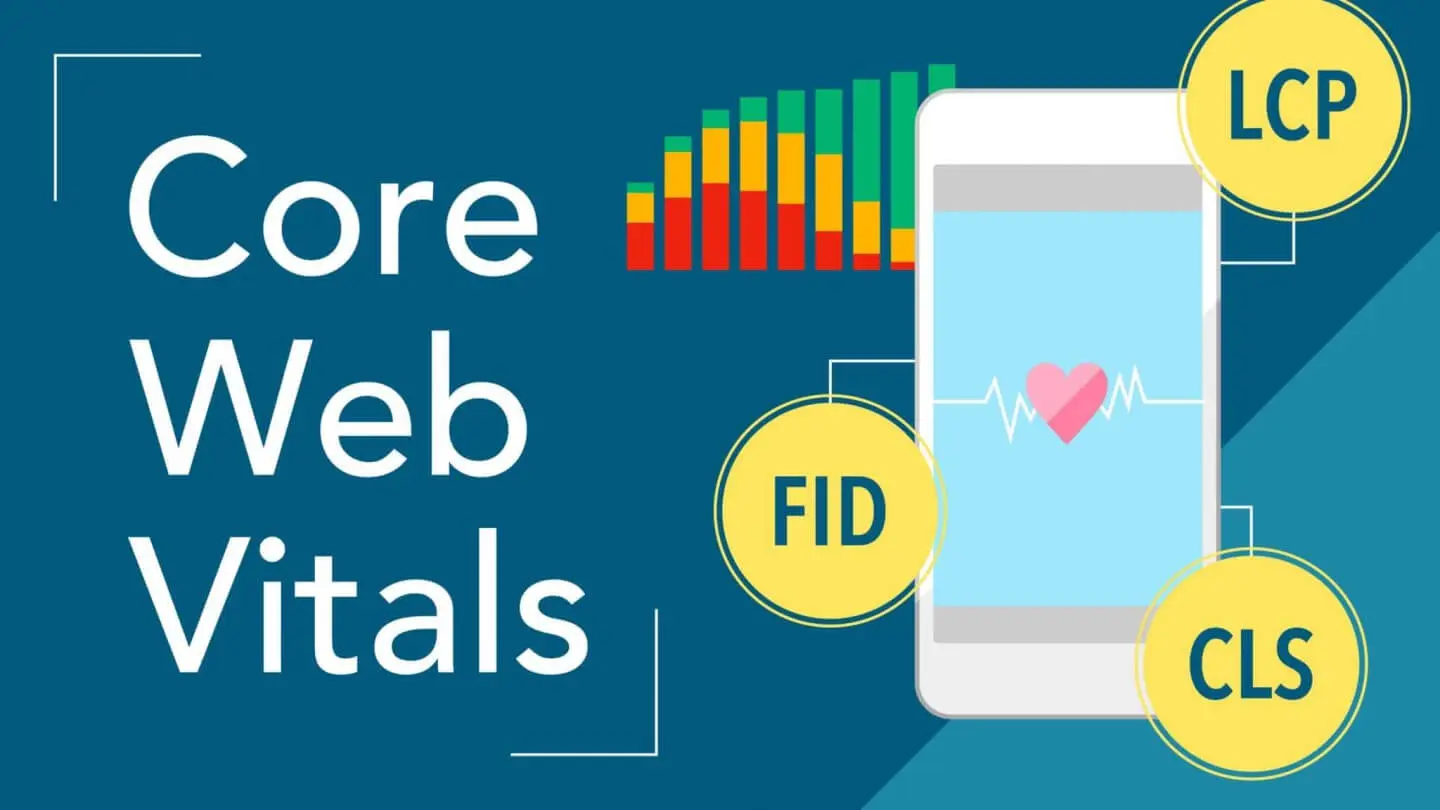What Are Core Web Vitals & How To Improve it

Do you know Google uses special ranking signals to measure the website’s performance?
Core Web Vitals are the metric to measure the performance of the website. Once you understand the Core Web Vitals, You can take action to improve your website page speed. This will help you to provide a better user experience and also improve the SEO rankings.
What are core web vitals?
Core web Vitals are the set of metrics that are used to measure the website performance such as speed, visual stability, interactivity, and many more. Core web Vitals are an important ranking factor for SEO.
The core web Vitals are:
1. Largest Contentful paint (LCP)
Largest Contentful Paint (LCP) is also known as a user experience (UX) metric. LCP measures the time taken to load the largest content element on a web page. In order to provide a good user experience, Large Contentful paint should be less than 2.5 seconds.
2. First Input Delay (FID)
First Input Delay (FID) measures the time to takes a browser to respond to a user’s first interaction with the web page. For a good user experience, First input Delay should be less than 100 milliseconds.
3. First Contentful Paint (FCP)
First Contentful Paint (FCP) is an important user-centric metric. FCp measures how quickly a user can view the actual content such as text, images, and videos on your webpage. FCP should be under 1.8 seconds.
4. Cumulative Layout Shift (CLS)
Cumulative Layout Shift (CLS) is used to measure how much a web page’s layout shifts unexpectedly as it loads the content. It should be less than 0.1 to provide a better user experience.
How to measure Core Web Vital?

There are many online tools available to measure website pagespeed performance as well as the core web vitals. You can use Google Pagespeed Insight, GTmetrix, RabbitLoader, and Google Lighthouse to measure the core web vitals.
1. GTmetrix
GTmetrix is a tool that provides the website performance score. It will check the web page’s size, loading time of a website, and requests happening, and then provide a performance score. GTmetrix will also provide suggestions for improvement of the page speed score.
You can check the overall score based on the Core Web Vital metrics like First Contentful Paint (FCP), Largest Contentful Paint (LCP), and Cumulative Layout Shift(CLS).
2. Google Pagespeed Insight
Google Pagespeed Insight provides reports on the user experience of the webpage on both desktop mode as well as mobile mode. Also, you can check on how a webpage can be improved.
Google pagespeed Insights provides a score in between 0 to 100. If the score is more than 90, then it will be considered a good score whereas a score between 50 to 90 is considered an average score, which indicates the performance needs to be improved. And finally, if the score is below 50, then the website fails the performance check.
Google PageSpeed Insight provides the overall performance score based on Core Web Vital metrics like FCP (First Contentful Paint), FID (First Input Delay), LCP(Largest Contentful Paint), CLS(Cumulative Layout Shift), and so on.
also provides suggestions on how the webpage can be improved.
Google PageSpeed Insight provides the overall performance result based on Core Web Vital metrics like FCP (First Contentful Paint), FID (First Input Delay), LCP(Largest Contentful Paint), CLS(Cumulative Layout Shift), and so on.
3. RabbitLoader
You can check the website performance score in RabbitLoader. Also, It provides suggestions on how much you can improve the pagespeed performance score by using their plugin.
RabbitLoader provides the page speed score based on CSS Code, First Contentful Paint, First Meaningful Paint, Images, Speed Index, Time To Interactive, and Total Blocking Time.
Why core web vital is important?

We all know, a website’s pagespeed is an important factor for a better user experience as well as Search Engine Optimization (SEO) rankings. A slow website can reduce user engagement rates and increase bounce rates. So, this will harm your website’s SEO rankings.
Core Web Vitals can help you to reduce these issues. They check the web page loading speed and help you identify the areas where you can improve performance. Basically, it considers the web page’s loading time, visual stability, and interactivity. These metrics are important for Google algorithms to measure the website’s health.
How to improve it?
Now, you have an idea of what is Core Web Vitals and their importance. You need to follow the below strategies to improve Core Web Vitals.
1. Optimize images
Large-sized image is a common problem of a slow-loading website. So you can optimize the large-sized image by using online image optimization tools like ImageOptim, TinyPNG, and many more. This will help you to improve the core web vitals performance.
2. Minify HTML, CSS, and JavaScript
HTML, CSS, and JavaScript are the fundamental elements of a webpage. HTML creates the webpage’s content and CSS makes the webpage stylish whereas JavaScript makes the web page interactive.
Many developers use unnecessary space, comments, and a large variable name for their better understanding. It will increase the loading time of your webpage. To reduce this issue, you need to minify the code.
There are several online tools like HTML compressor, CleanCSS, JSCompressor, and many more, that can minify your HTML, CSS, and JavaScript files
3. Use Content Delivery Network
The real-world distance between the user and the server is the most common reason for a slow website.
A content delivery Network (CDN) can reduce this distance by distributing the content across the worldwide server. The most popular CDNs are CDN77, CloudFront take, and many more.
4. Enable lazy loading
Lazy loading is the most common option if the website has a lot of images. Lazy loading loads only the images that are above the fold or in visible areas. The remaining images are not loaded until the user scrolls down to the webpage.
Lazy loading also can be applied to other media such as video as well as page content like comments and text. So, lazy loading is used for PageSpeed optimization.
Conclusion
In this article, we discussed the importance of Core Web Vitals and strategies to improve this for a better user experience and SEO rankings.
Now it’s your turn to apply the strategies to speed up your website.

